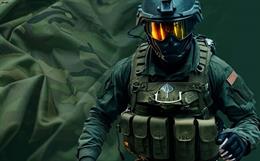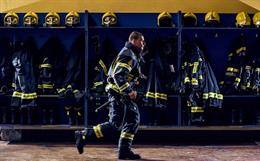Functional textile is a branch of technical textiles, which is one of the most important fields in the textile industry, as far as textile materials are concerned. Different varieties of fabric or a single fabric that provides integrated features are used according to the end use. Simply put, functional textiles provide a specific kind of application or function to the product. In their manufacture, the product focuses on functionality and the end application, rather than focusing on the aesthetic look and appearance. The other properties that are taken into consideration while manufacturing functional textiles are flexibility, versatility, interactivity, functionality, and compatibility. Additionally, these textiles have achieved various features, encompassing a range of functionalities such as temperature regulation, humidity monitoring, health surveillance, athletic training assistance, positional tracking, development of protective garments with abrasion resistance, incorporation of antibacterial properties, moisture absorption capabilities, as well as efficient quick-drying functionalities, among various other potential functions.1
Functional Clothing
Nowadays, various research and development sectors are actively engaged in exploring the realm of textiles and their diverse applications. A wide array of advanced manufacturing techniques is being employed to create high-performance variations of fibres, yarns, and fabrics. One of the most commonly known examples is functional clothing. Functional clothing is a generic term that includes different varieties of clothing that are specially and specifically manufactured to provide a pre-defined function to the wearer. The function of this type of garment can be anything like protecting wearers from virus enzymes, hazardous chemicals and environmental factors, facilitating body movement, assisting with physical challenges, providing electronic functionality, and much more. So, in the contemporary world functional clothing serves wide range of objectives and applications.2
Types of Functional Clothing
In functional textiles, the product is intentionally manufactured based on the end-use applications. There are many kinds of functional clothing available in today’s textile markets, but the main types of functional clothing include athletic wear, outdoor gear, medical garments, protective clothing, bio-sensing functional wear, vanity functional clothing, smart clothing, fashion-tech fusion, thermal clothing, adaptive clothing, and workout gear. Some of these are outlined below.
Protective Functional Clothing
Protective functional clothing is widely used in day-to-day life. Functional clothing can make the difference between life and death for its users, making it a crucial component of the clothing sector. It enhances the quality of life and prevents injuries to the body. Protective functional clothing serves various functions and can be mainly categorised into the following sub-classes.
• Based on Environmental Hazard Protection
• Based on Biological, Chemical and Radiation Hazard Protection
• Based on Injury Protection
In each situation, the technical requirements of functional clothing are highly particular and diverse. Functional clothing serves a wide range of applications, including protection from natural hazards, fire protection, and environmental conditions like snow, hot weather, and rain. Depending on the application, the right materials must be chosen to manufacture the products. For example, firefighters often wear clothing made from a combination of materials such as Nomex, Kevlar, and other flame-resistant synthetic fibres because these materials have high resistance to heat and flames. Polyester or cotton-like materials cannot be used to produce firefighting suits, as they lack flammability resistance and can melt when exposed to heat or fire. This is where functional clothing comes into play. The combination of materials like Nomex, Kevlar, and other flame-resistant materials is chosen to resist burning, melting, and ignition, ensuring the safety of firefighters in high-risk environments. Other examples of protective clothing include space suits, hazmat suits, chemical-resistant gloves, high-visibility vests, bulletproof vests, and accessories such as gloves, goggles, climbing helmets, coveralls, respirator masks, boots, ear defenders, anti-static clothing, and more. All types of protective clothing serve different applications and shield the human body against harmful conditions and elements.
Medical Functional Clothing
Medical functional clothing plays an important role in the healthcare sector, it contributes to efficient medical care and safety conditions of humans and animals. They are used to enhance the patient health and care. Simply put, medical functional clothing are the pieces of cloth used by patients, surgeons, nurses, and ward boys, which includes gowns, aprons, gloves, masks, lab coats, scrubs, caps, and many more. All types of medical clothing are designed and manufactured under the best hygiene conditions and control measures. Hygiene, infection control, and ease of movement are paramount considerations in their design. The core function of medical clothing is the protection of the body from bacteria, germs, fluids and other harmful substances. Therefore, these items are critical components of the healthcare sector, serving various purposes during medical procedures and ensuring the hygiene, infection control, and safety of both patients and healthcare professionals. They are primarily designed to meet the requirements and demands of performing medical tasks in challenging environments. Oral medical functional clothing, in particular, has a significant impact on improving the hygiene and well-being of patients, adhering to strict standards.
Sportswear Functional Clothing
Sportswear is one of the widely used and versatile segments in the textile market. With people’s lifestyles undergoing dramatic changes and increasing global population, activewear and sportswear segments are poised for a promising future. The growing awareness of health consciousness and increased sports participation are driving the demand for sportswear industries and functional sport apparel. This is where smart textiles come into play, as they possess multiple functional properties and characteristics, including moisture management, stretchability, a better sewability index, lightweight properties, odour reduction, temperature regulation, and more. Sportswear clothing represents a category that goes beyond regular textiles; it is manufactured to support athletes and enhance their performance. While aesthetics plays a role in sportswear design, they are considered a secondary factor. The design and fashion of the garment may have an impact, but this factor does not necessarily add value to the athlete’s performance.
Vanity Clothing
In the past, vanity clothing was a distinct category that did not fall under functional clothing. Its primary role was to enhance the wearer’s appearance rather than serving a specific function. With the influence of fashion, aesthetic preferences, and the importance of fitness and health, vanity clothing has gained popularity in the clothing market. Nowadays, both men and women may have bodies that have aged or are not exactly how they want them to be, and these types of clothing offer a quick solution without the need for surgery. The primary function is to enhance the wearer’s body, making it appear more attractive. This is achieved by providing support, lifting, and shaping specific parts of the human body to create a better and more refined look. Manufacturers employ hidden supports such as padding, shapers, and specialised manufacturing and stitching techniques in the design of these garments. Examples of vanity clothing include undergarments like bras, panties, lingerie, and tops. These garments support and lift various body parts, preventing sagging and providing a proper and sleek shape to the back, hips, thighs, waist, and stomach. Depending on personal preferences and desired outcome, people can choose clothing that helps them achieve the look they want.
Cross-Functional Clothing Assemblies
Clothing assembly is one of the most advanced types of clothing, capable of performing a variety of tasks simultaneously. These types of clothing serve a wide range of applications and offer versatile features. They are intentionally designed and manufactured to function effectively in various situations. Examples include specialty jackets and pants, spacesuits, and military clothing. In jackets, we can find features like detachable sleeves or two-in-one jackets that function as both a jacket and a raincoat. Pants can be designed to transform into shorts by removing the lower section.
Two examples of these type of clothing are military clothing and spacesuits. These two types of functional clothing are crafted using different materials, including specialised fabrics, the integration of smart gadgets and equipment, materials like metal and ceramics, as well as unique raw materials. These garments serve distinct purposes. Manufacturers and designers must consider various factors, including the total weight of the garment, flexibility, comfort, design, and other features to ensure they meet the objectives of the clothing assembly.
Military clothing: Military clothing and assembly are prime examples of cross-functional clothing, designed to perform multiple tasks simultaneously. For instance, they are responsible for safeguarding soldiers from bullets, fires, flames, extreme heat and cold, chemicals, radioactive rays, and more. Military personnel, including soldiers, typically wear helmets, gloves, masks, shoes, rifles or guns, communication systems, and various other equipment on their bodies. With these clothing, soldiers remain flexible and agile, allowing them to move quickly and effectively in challenging situations for extended periods. Therefore, this type of functional clothing plays a crucial role in saving soldiers’ lives.
Space suits: Space suits are advanced types of personal clothing designed to function both on Earth and in space. These suits and their accessories are highly complex, comprising up to 17,000 to 18,000 parts and 11 different fabric layers. Once astronauts wear their space suits, they have to face various harsh conditions of space, including radiation, extreme temperatures, high winds, and other challenges. Therefore, space suits are manufactured to provide protection from the hazardous conditions of space while ensuring the safety of astronauts.
In today’s world, functional clothing and assemblies serve a wide range of applications and play a vital role. This type of clothing offers flexibility, convenience, and adaptability to the wearer, enabling them to perform various activities and tasks.
Clothing for Special Needs
This category of clothing is intended for individuals who may have distinct requirements or whose needs differ from what is typically considered ‘normal’. This type of clothing provides a better lifestyle to the wearer. Examples of special needs clothing include garments for pregnant women, clothing for older individuals, attire for kids and babies, and especially garments tailored for disabled people. These people need different and special clothing to perform their various tasks and activities. The clothing should possess the following characteristics when worn.2
• Comfort
• Aesthetic looks and designs
• Flexibility
• Durability
• Breathability
• Optimum sewability
• Proper fit
• Mobility
Conclusion
Functional textiles and clothing have revolutionised various industries by offering materials that serve specific purposes beyond an aesthetic look. The specialised fibres, yarns, fabrics, and garments provide tailored functionalities to meet the unique demands and needs of the end consumers. The major functional clothing types, ranging from protective clothing, medical garments, and sportswear to vanity clothing, cross-functional assemblies, and clothing for special needs, enhance safety, comfort, and performance while catering to specific requirements. The market for functional goods is now growing rapidly, driven by technological advancements and increasing demand. As the world embraces functional textiles, they not only cater to diverse applications but also contribute significantly to economic and technological progress of various countries.
- “Functional Textiles: Types, Application and Market Research.” Textile Learner, 20 Dec. 2021, https://textilelearner.net/functional-textiles-types-application/, Accessed on 20 August 2023.
- Gupta, Deepti. “Functional Clothing- Definition and Classification.” Indian Journal of fibre and textile research, vol. 36, 2011, 123456789/13225, http://nopr.niscpr.res.in/handle/123456789/13225 , Accessed on 06 September 2023.







